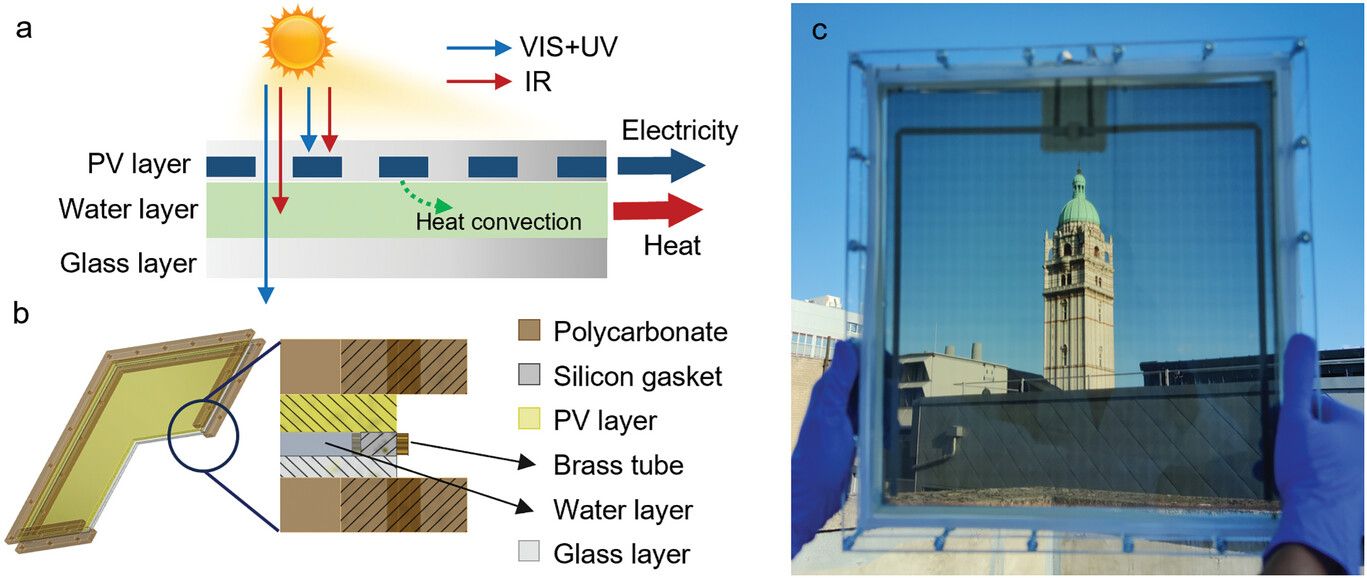
Inquiry
Photovoltaic Thermal Window Reaches 3.6% Electrical Efficiency, Provides 50°C Hot Water
A team of German and British researchers has developed a new building-integrated hybrid PV-thermal window (PVTW) that generates both electricity and domestic hot water (DHW).
“Installing ordinary solar panels and collectors in the built environment requires the use of significant roof space, which is limited. This has inspired the development of efficient, building-integrated technologies that can maximize the use of space and energy supply.” “In this work, we fabricated and tested a building-integrated hybrid PVTW, which consists of a translucent PV layer and a selectively absorbing liquid-based heat absorber.”
The main component of the PVTW is a glass layer with an array of spaced amorphous silicon (a- si) microstripes. Only a portion of the sunlight is absorbed by the PV layer for power generation, while the rest is transmitted to a 4-mm-thick water layer below it. Two brass tubes serve as the water inlet and outlet, and two polycarbonate frames are used to sandwich a standard low-iron glass layer.
The tests were carried out on a rooftop in London from July 16 to 23, 2021, when the maximum ambient temperature measured was 34 degrees Celsius and the solar irradiance at midday was about 1100 W m - 2. The device was tested at inclinations of 30°, 60° and 90°, and its performance was compared to that of a reference module for a Solar Thermal Window (STW) without a PV component. The latter is identical to the PVTW except that the PV layer is replaced by a glass layer to form two layers.
The test results show that the PVTW system has an electrical efficiency of 3.6% and a thermal efficiency of 17.6%.
“At a tilt angle of 30°, the PVTW has an electrical efficiency of 3.6% and a thermal efficiency of 10.7%. The ability to produce hot water of about 50°C makes it suitable for domestic applications, while its power generation supports the energy needs of the building,” the team noted. “Adjusting the inclination of the PVTW from 30° to 90°, changes in output temperature and thermal efficiency can be observed, demonstrating the importance of orientation on system performance.”
They added: “At an inclination of 90°, the system has an electrical efficiency of 3.3% and a thermal efficiency of 17.6%, with a maximum effluent temperature of approximately 42 degrees Celsius. Not only does the system provide hot water at higher temperatures compared to a stand-alone wastewater treatment plant, but it is definitely 10% more thermally efficient and also generates electricity.”
The academics said, “To understand the potential impact of PVTW in meeting the thermal energy needs of a building, we can estimate the surface of PVTW required to meet the hot water needs of a typical three-bedroom attached house in London, UK, occupied by two adults and two children.” “Using an energy balance, an entire PVTW surface of no more than 1.2 square meters at a 30° inclination would be required to meet this demand immediately. Assuming a larger system with a hot water storage tank, we estimate that at the same inclination, about 2.8 m2 of PVTW surface would be required to meet the entire daily demand without the need for a backup boiler.”
The system is published in “Building-integrated hybrid photovoltaic-thermal (PV-T) windows for synergistic light management, electricity and heat generation” in the journal Advanced Science. Researchers at Imperial College London, UK, and Karlsruhe Institute of Technology, Germany, conducted the study.
Our expert will reach you out if you have any questions!

